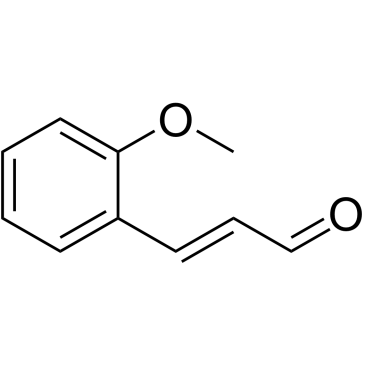Apoptosis
As one of the cellular death mechanisms, apoptosis, also known as programmed cell death, can be defined as the process of a proper death of any cell under certain or necessary conditions. Apoptosis is controlled by the interactions between several molecules and responsible for the elimination of unwanted cells from the body.
Many biochemical events and a series of morphological changes occur at the early stage and increasingly continue till the end of apoptosis process. Morphological event cascade including cytoplasmic filament aggregation, nuclear condensation, cellular fragmentation, and plasma membrane blebbing finally results in the formation of apoptotic bodies. Several biochemical changes such as protein modifications/degradations, DNA and chromatin deteriorations, and synthesis of cell surface markers form morphological process during apoptosis.
Apoptosis can be stimulated by two different pathways: (1) intrinsic pathway (or mitochondria pathway) that mainly occurs via release of cytochrome c from the mitochondria and (2) extrinsic pathway when Fas death receptor is activated by a signal coming from the outside of the cell.
Different gene families such as caspases, inhibitor of apoptosis proteins, B cell lymphoma (Bcl)-2 family, tumor necrosis factor (TNF) receptor gene superfamily, or p53 gene are involved and/or collaborate in the process of apoptosis.
Caspase family comprises conserved cysteine aspartic-specific proteases, and members of caspase family are considerably crucial in the regulation of apoptosis. There are 14 different caspases in mammals, and they are basically classified as the initiators including caspase-2, -8, -9, and -10; and the effectors including caspase-3, -6, -7, and -14; and also the cytokine activators including caspase-1, -4, -5, -11, -12, and -13. In vertebrates, caspase-dependent apoptosis occurs through two main interconnected pathways which are intrinsic and extrinsic pathways. The intrinsic or mitochondrial apoptosis pathway can be activated through various cellular stresses that lead to cytochrome c release from the mitochondria and the formation of the apoptosome, comprised of APAF1, cytochrome c, ATP, and caspase-9, resulting in the activation of caspase-9. Active caspase-9 then initiates apoptosis by cleaving and thereby activating executioner caspases. The extrinsic apoptosis pathway is activated through the binding of a ligand to a death receptor, which in turn leads, with the help of the adapter proteins (FADD/TRADD), to recruitment, dimerization, and activation of caspase-8 (or 10). Active caspase-8 (or 10) then either initiates apoptosis directly by cleaving and thereby activating executioner caspase (-3, -6, -7), or activates the intrinsic apoptotic pathway through cleavage of BID to induce efficient cell death. In a heat shock-induced death, caspase-2 induces apoptosis via cleavage of Bid.
Bcl-2 family members are divided into three subfamilies including (i) pro-survival subfamily members (Bcl-2, Bcl-xl, Bcl-W, MCL1, and BFL1/A1), (ii) BH3-only subfamily members (Bad, Bim, Noxa, and Puma9), and (iii) pro-apoptotic mediator subfamily members (Bax and Bak). Following activation of the intrinsic pathway by cellular stress, pro‑apoptotic BCL‑2 homology 3 (BH3)‑only proteins inhibit the anti‑apoptotic proteins Bcl‑2, Bcl-xl, Bcl‑W and MCL1. The subsequent activation and oligomerization of the Bak and Bax result in mitochondrial outer membrane permeabilization (MOMP). This results in the release of cytochrome c and SMAC from the mitochondria. Cytochrome c forms a complex with caspase-9 and APAF1, which leads to the activation of caspase-9. Caspase-9 then activates caspase-3 and caspase-7, resulting in cell death. Inhibition of this process by anti‑apoptotic Bcl‑2 proteins occurs via sequestration of pro‑apoptotic proteins through binding to their BH3 motifs.
One of the most important ways of triggering apoptosis is mediated through death receptors (DRs), which are classified in TNF superfamily. There exist six DRs: DR1 (also called TNFR1); DR2 (also called Fas); DR3, to which VEGI binds; DR4 and DR5, to which TRAIL binds; and DR6, no ligand has yet been identified that binds to DR6. The induction of apoptosis by TNF ligands is initiated by binding to their specific DRs, such as TNFα/TNFR1, FasL /Fas (CD95, DR2), TRAIL (Apo2L)/DR4 (TRAIL-R1) or DR5 (TRAIL-R2). When TNF-α binds to TNFR1, it recruits a protein called TNFR-associated death domain (TRADD) through its death domain (DD). TRADD then recruits a protein called Fas-associated protein with death domain (FADD), which then sequentially activates caspase-8 and caspase-3, and thus apoptosis. Alternatively, TNF-α can activate mitochondria to sequentially release ROS, cytochrome c, and Bax, leading to activation of caspase-9 and caspase-3 and thus apoptosis. Some of the miRNAs can inhibit apoptosis by targeting the death-receptor pathway including miR-21, miR-24, and miR-200c.
p53 has the ability to activate intrinsic and extrinsic pathways of apoptosis by inducing transcription of several proteins like Puma, Bid, Bax, TRAIL-R2, and CD95.
Some inhibitors of apoptosis proteins (IAPs) can inhibit apoptosis indirectly (such as cIAP1/BIRC2, cIAP2/BIRC3) or inhibit caspase directly, such as XIAP/BIRC4 (inhibits caspase-3, -7, -9), and Bruce/BIRC6 (inhibits caspase-3, -6, -7, -8, -9).
Any alterations or abnormalities occurring in apoptotic processes contribute to development of human diseases and malignancies especially cancer.
References:
1.Yağmur Kiraz, Aysun Adan, Melis Kartal Yandim, et al. Major apoptotic mechanisms and genes involved in apoptosis[J]. Tumor Biology, 2016, 37(7):8471.
2.Aggarwal B B, Gupta S C, Kim J H. Historical perspectives on tumor necrosis factor and its superfamily: 25 years later, a golden journey.[J]. Blood, 2012, 119(3):651.
3.Ashkenazi A, Fairbrother W J, Leverson J D, et al. From basic apoptosis discoveries to advanced selective BCL-2 family inhibitors[J]. Nature Reviews Drug Discovery, 2017.
4.McIlwain D R, Berger T, Mak T W. Caspase functions in cell death and disease[J]. Cold Spring Harbor perspectives in biology, 2013, 5(4): a008656.
5.Ola M S, Nawaz M, Ahsan H. Role of Bcl-2 family proteins and caspases in the regulation of apoptosis[J]. Molecular and cellular biochemistry, 2011, 351(1-2): 41-58.
What is Apoptosis? The Apoptotic Pathways and the Caspase Cascade
Targets for Apoptosis
- Pyroptosis(16)
- Caspase(54)
- 14.3.3 Proteins(1)
- Apoptosis Inducers(41)
- Bax(8)
- Bcl-2 Family(108)
- Bcl-xL(8)
- c-RET(8)
- IAP(26)
- KEAP1-Nrf2(68)
- MDM2(13)
- p53(108)
- PC-PLC(4)
- PKD(6)
- RasGAP (Ras- P21)(1)
- Survivin(6)
- Thymidylate Synthase(10)
- TNF-α(131)
- Other Apoptosis(884)
- Apoptosis Detection(0)
- Caspase Substrate(0)
- APC(5)
- PD-1/PD-L1 interaction(61)
- ASK1(3)
- PAR4(2)
- RIP kinase(49)
- FKBP(19)
Products for Apoptosis
- Cat.No. 상품명 정보
-
GC10350
TIC10 isomer
ONC201 isomer
TIC10 이성질체는 TIC10의 이성질체입니다.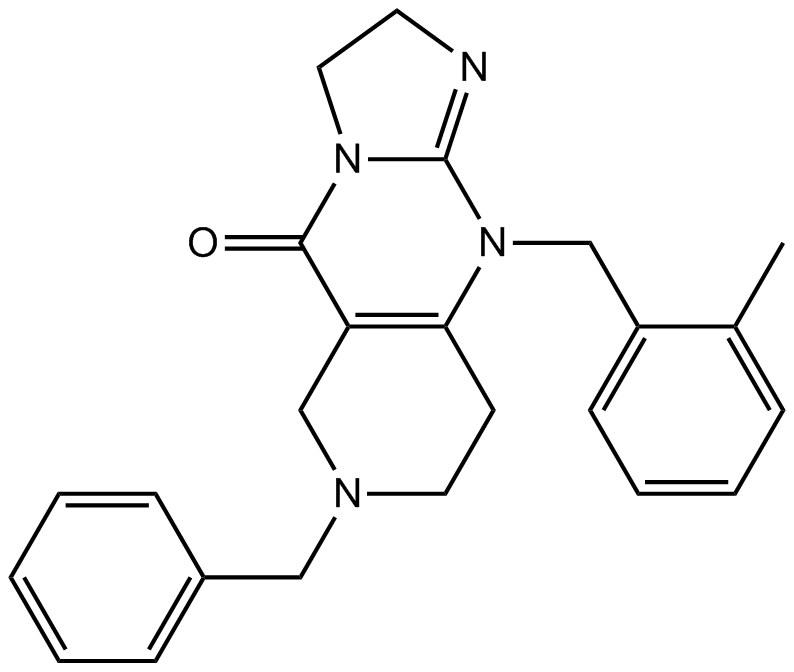
-
GC41183
α-Carotene
all-trans-α-Carotene
α - 비타민 A의 전구체인 카로틴은 항전이제 또는 항암제의 보조제로 사용됩니다. α-카로틴은 노란색-주황색 및 짙은 녹색 채소에서 분리됩니다.
-
GC48292
α-MSH (human, mouse, rat, porcine, bovine, ovine) (trifluoroacetate salt)
α-Melanocyte-stimulating Hormone, Ac-SYSMEHFRWGKPV-NH2
α-MSH(⋱-멜라닌 세포 자극 호르몬) TFA는 내인성 신경 펩티드이며 항염 및 해열 활성을 갖는 내인성 멜라노코르틴 수용체 4(MC4R) 작용제입니다.
-
GC45213
α-NETA
α-NETA는 강력하고 비경쟁적인 콜린 아세틸트랜스퍼라제(ChA; IC50\u003d76μM) 및 콜린에스테라제(ChE; IC50\u003d40μM) 억제제입니다. α-NETA는 아세틸콜린에스테라아제(AChE; IC50\u003d1mM)를 약하게 억제합니다.

-
GC41499
α-Phellandrene
p-Mentha-1,5-diene, (±)-α-Phellandrene
α-Phellandrene is a cyclic monoterpene that has been found in various plants, including Cannabis, and has diverse biological activities.
-
GC63941
α-Solanine
α- 감자의 주요 스테로이드성 글리코알칼로이드 중 하나인 생리활성 성분인 솔라닌이 암세포의 성장을 억제하고 세포자멸사를 유도하는 것으로 관찰되었습니다.
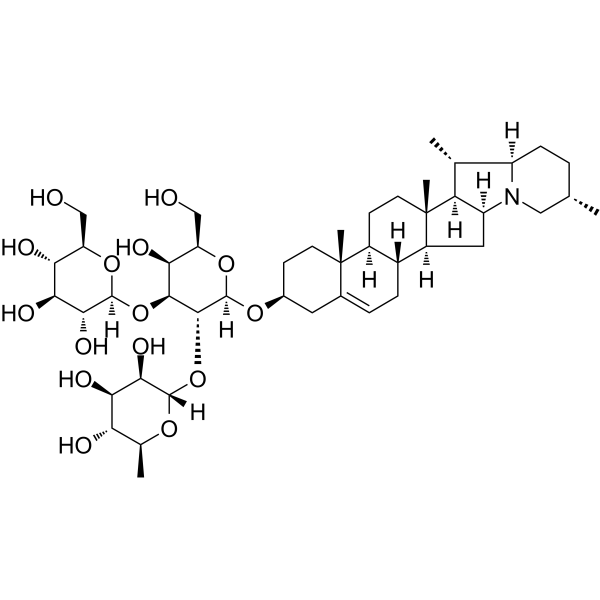
-
GC67618
α-Tocopherol phosphate disodium
alpha-Tocopherol phosphate disodium; TocP disodium; Vitamin E phosphate disodium
α-유망한 항산화제인 토코페롤 인산염(알파-토코페롤 인산염) 이나트륨은 피부 세포 모델에서 장파 UVA1 유도 세포 사멸을 방지하고 UVA1 유도 활성산소를 제거할 수 있습니다. 821d96072c2d58d8970e76f526b0f6b8α-토코페롤 포스페이트 디소듐은 세포자살 억제에 치료 가능성이 있으며 고포도당/저산소 상태에서 내피 전구 세포의 이동 능력을 증가시키고 혈관 신생을 촉진합니다.821d96072c2d58d8970e76f526b0f6b8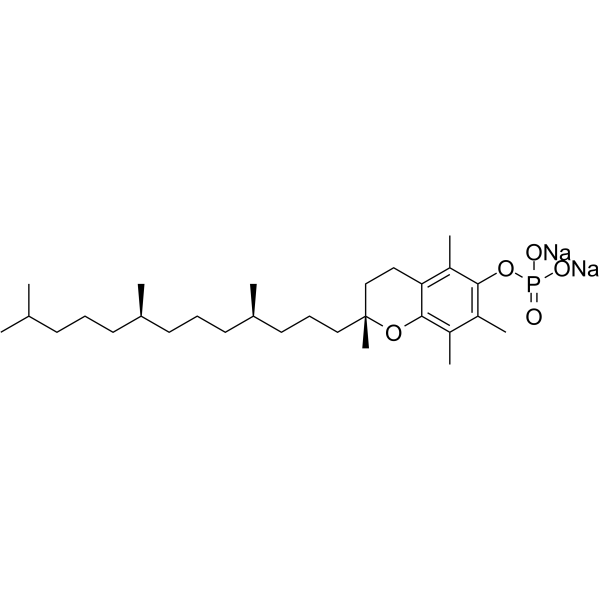
-
GC48920
β-Carboline-1-carboxylic Acid
1-Formic Acid-β-carboline
An alkaloid with diverse biological activities
-
GC41623
β-Elemonic Acid
Elemadienonic Acid, 3-Oxotirucallenoic Acid, 3-oxo Tirucallic Acid
β-엘레몬산은 보스웰리아 파피리페라에서 분리된 트리테르펜입니다.
-
GC64619
β-Ionone
β-Ionone은 위 선암 SGC7901 세포에서 세포 사멸 유도에 효과적입니다. 항암 활성.
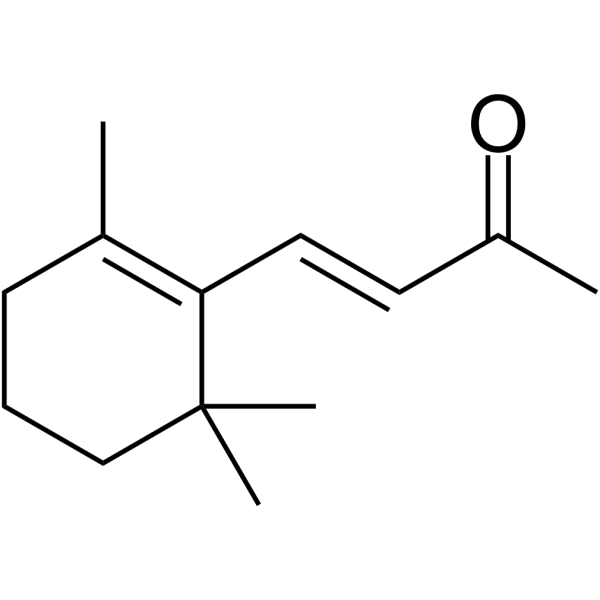
-
GC66048
δ-Secretase inhibitor 11
δ-세크레타제 억제제 11(화합물 11)은 경구 활성, 강력, BBB 침투성, 무독성, 선택적 및 특이성 δ-세크레타제 억제제, IC50 0.7 μM. 821d96072c2d58d8970e76f526b0f6b8δ-세크레타제 억제제 11은 δ-세크레타제의 활성 부위 및 알로스테릭 부위 모두와 상호작용한다. 821d96072c2d58d8970e76f526b0f6b8δ-세크레타제 억제제 11은 타우 및 APP(아밀로이드 전구체 단백질) 절단을 약화시킵니다. 821d96072c2d58d8970e76f526b0f6b8δ- 세크레타제 억제제 11은 tau P301S 및 5XFAD 트랜스제닉 마우스 모델에서 시냅스 기능 장애 및 인지 장애를 개선합니다. 821d96072c2d58d8970e76f526b0f6b8δ-Secretase 억제제 11은 알츠하이머병 연구에 사용할 수 있습니다.821d96072c2d58d8970e76f526b0f6b8
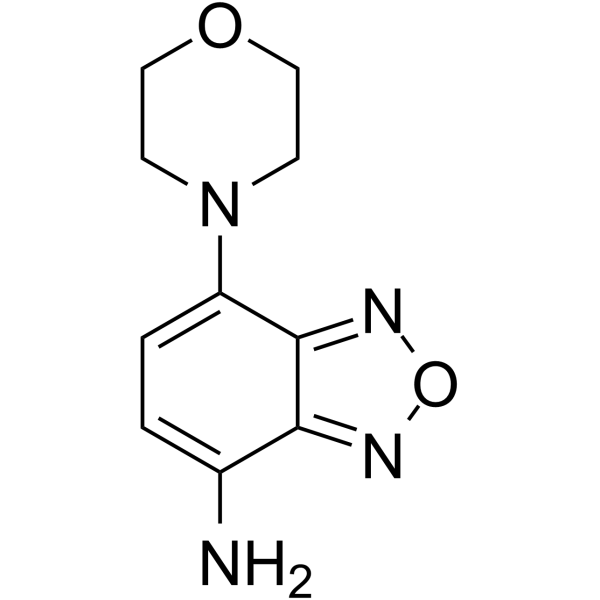
-
GC46008
(±)-Thalidomide-d4
N-Phthaloylglutamimide-d4
(±)-탈리도마이드-d4는 탈리도마이드로 표지된 중수소입니다.
-
GC45618
(±)-trans-GK563
GK563
A GVIA iPLA2 inhibitor
-
GC45270
(±)10(11)-EDP Ethanolamide
10,11-EDP-EA, 10,11-EDP epoxide, 10,11-epoxy Docosapentaenoic Ethanolamide
(±)10(11)-EDP ethanolamide is an ω-3 endocannabinoid epoxide and cannabinoid (CB) receptor agonist (EC50s = 0.43 and 22.5 nM for CB1 and CB2 receptors, respectively).
-
GC49268
(+)-δ-Cadinene
A sesquiterpene with antimicrobial and anticancer activities

-
GC18516
(+)-Aeroplysinin-1
NSC 170364
(+)-Aeroplysinin-1((+)-Aeroplysinin-1)은 해양 해면에서 분리된 2차 대사산물로 그람 양성균에 강력한 항생 효과를 나타내며 HIV-1(IC50\u003d14.6μM)에 항바이러스 활성을 나타냅니다.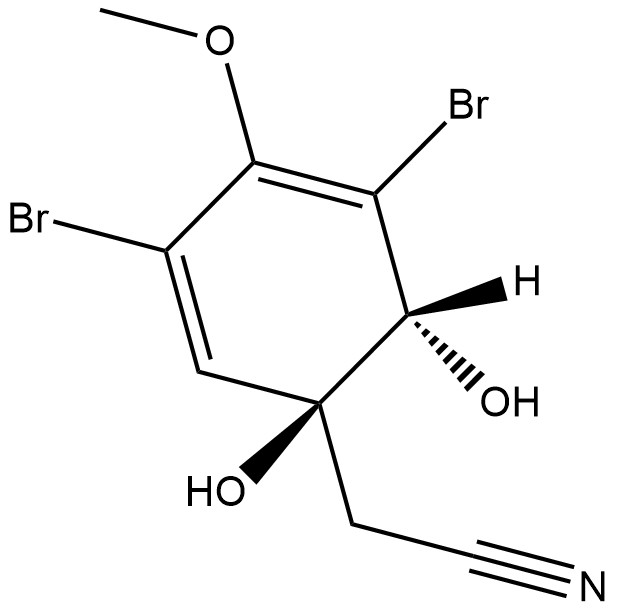
-
GC17008
(+)-Apogossypol
(+)-Apogossypol은 범 BCL-2 길항제입니다. (+)-Apogossypol은 각각 2.6, 2.8 및 3.69μM의 EC50으로 Mcl-1, Bcl-2 및 Bcl-xL에 결합합니다.
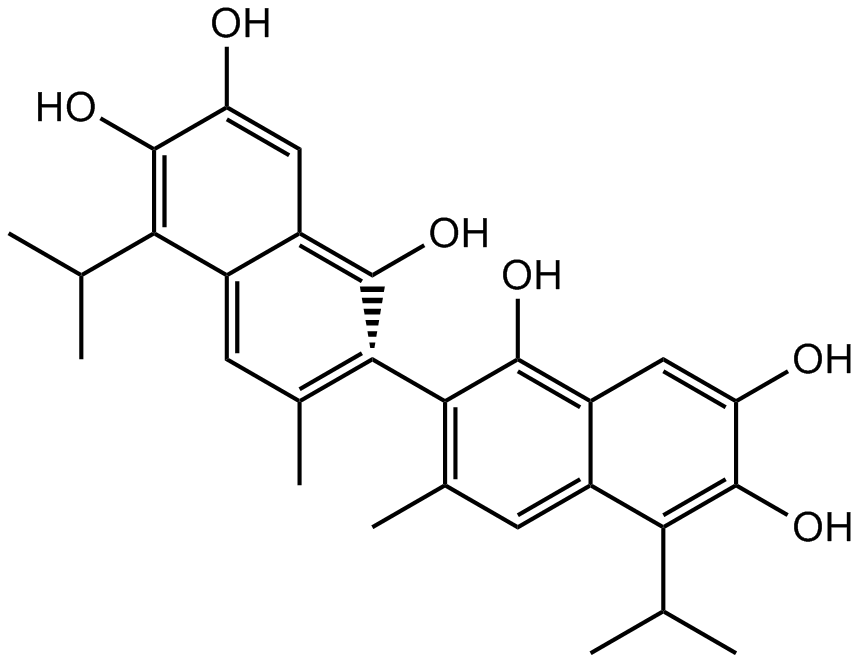
-
GC45256
(+)-ar-Turmerone
(S)(+)arTurmerone
(+)-ar-Turmerone((+)-(+)-ar-Turmerone)은 항종양 및 항염증 활성이 있는 Curcuma longa 허브의 주요 생리 활성 화합물입니다.
-
GN10654
(+)-Corynoline
(+)-Corynoline, 13-methyl-Chelidonine, CRL, (d)-Corynoline
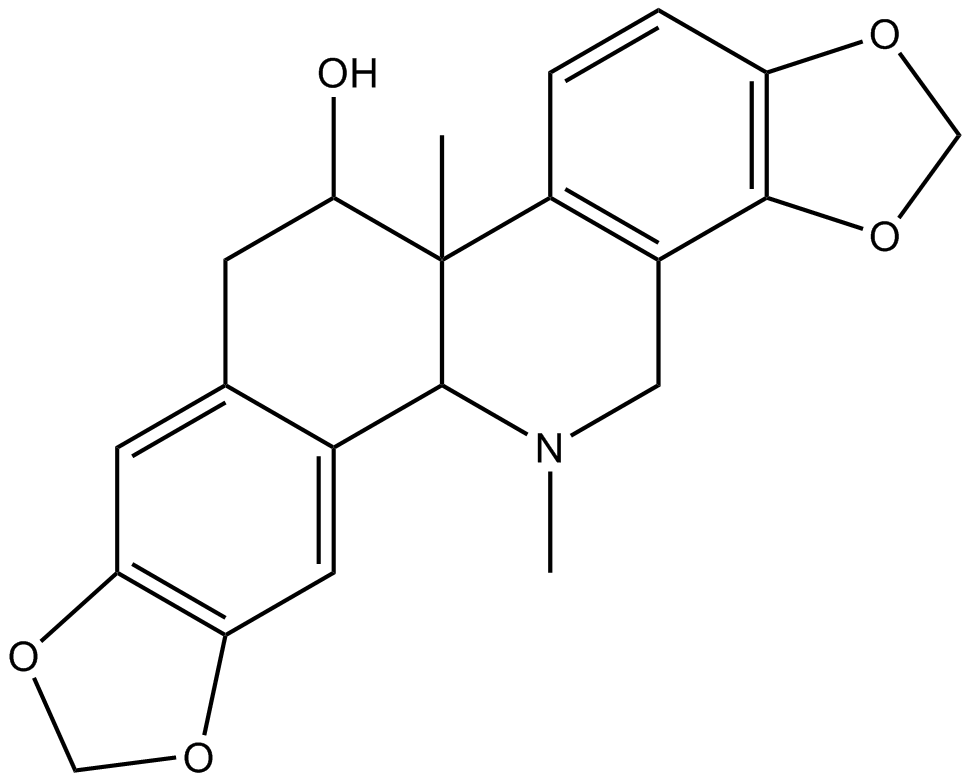
-
GC31691
(+)-DHMEQ
(1R,2R,6R)-Dehydroxymethylepoxyquinomicin; (1R,2R,6R)-DHMEQ
(+)-DHMEQ는 항산화 전사 인자 Nrf2의 활성화제입니다.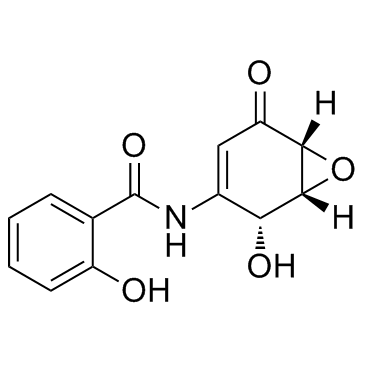
-
GC45265
(+)-Goniothalesdiol
(+)-Goniothalesdiol, isolated from the bark of the Malaysian tree G.

-
GC45274
(+)-Pinoresinol
NSC 35444
(+)-Pinoresinol은 애벌레의 방어를 위해 제공되는 식물 기원의 리그놀입니다. (+)-Pinoresinol은 TNF-related apoptosis-inducing ligand (TRAIL)-induced apoptosis에 대해 암세포를 과감하게 감작시킵니다.
-
GC18749
(+)-Rugulosin
NSC 160880, NSC 249990, Rugulosin A
(+)-Rugulosin은 Penicillium rugulosum Thom의 결정질 착색 물질입니다.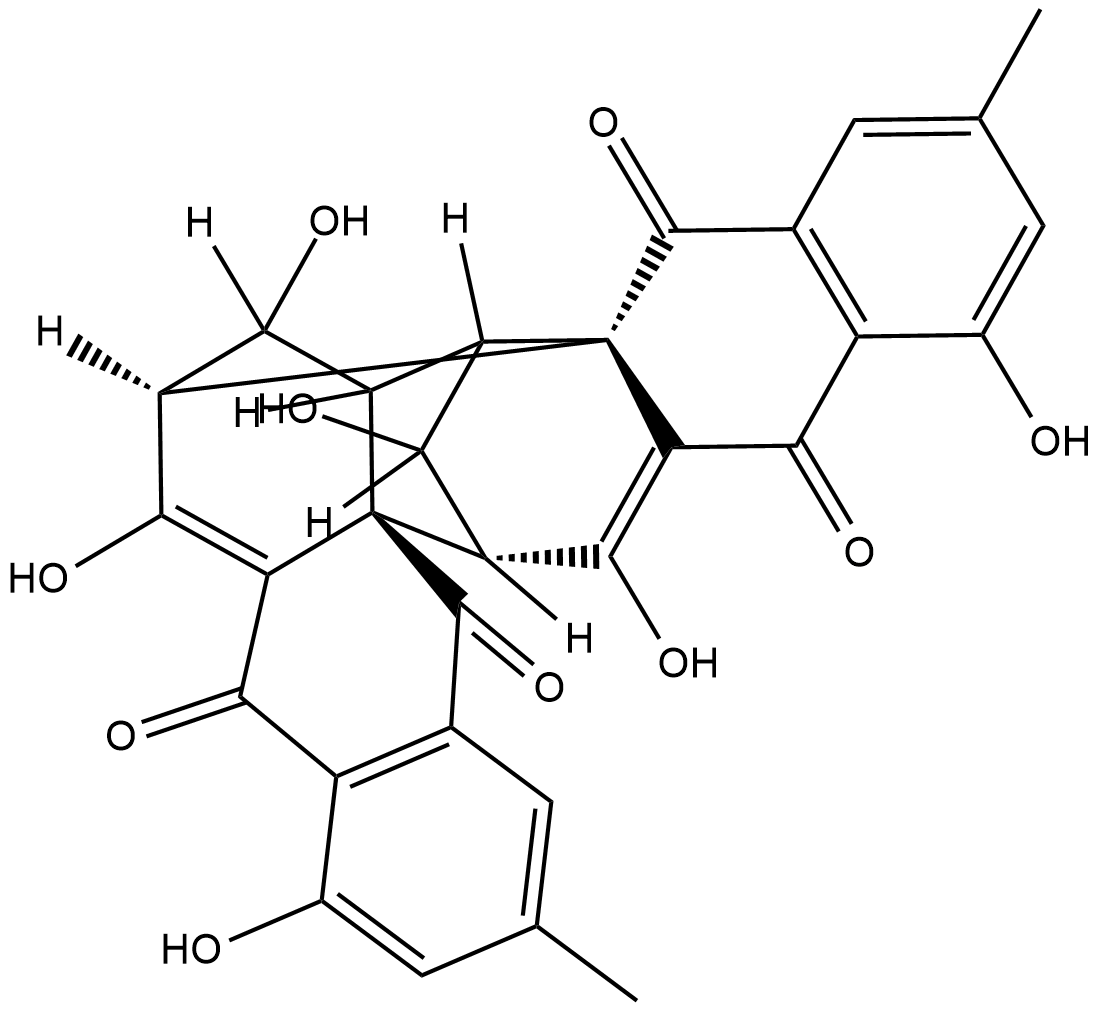
-
GC41345
(-)-α-Bisabolol
DL-α-Bisabolol
(-)-α-Bisabolol((-)-α-Bisabolol), 단환 세스퀴테르펜 알코올은 항산화, 항염 및 항세포자멸 활성을 발휘합니다.
-
GC49502
(-)-β-Sesquiphellandrene
A sesquiterpene with antiviral and anticancer activities

-
GC45244
(-)-(α)-Kainic Acid (hydrate)
간질 유발을 위한 강력한 중추신경 자극제

-
GC45246
(-)-Chaetominine
(-)-Chaetominine
(-)-Chaetominine은 알칼로이드 대사 산물입니다. (-)-케토미닌은 인간 백혈병 K562 및 결장암 SW1116 세포주에 대해 세포독성을 갖는다. (-)-케토미닌은 K562/Adr 인간 백혈병 세포에서 PI3K/Akt/Nrf2 신호 전달 경로를 억제하여 MRP1 매개 약물 내성을 감소시킵니다.
-
GC40698
(-)-Perillyl Alcohol
(L)-Perillyl Alcohol, (S)-Perillic Alcohol, (S)-(–)-Perillyl Alcohol
(-)-페릴릴 알코올은 라벤더에서 발견되는 모노테르펜으로 Ras의 파르네실화를 억제하고 만노스-6-인산 수용체를 상향 조절하고 세포자멸사를 유도합니다. 항암 활성.
-
GC40076
(-)-Voacangarine
NSC 306219, (-)-Voacristine
(-)-Voacangarine is an indole alkaloid originally isolated from V.
-
GC62193
(1S,2S)-Bortezomib
(1S,2S)-보르테조밉은 보르테조밉의 거울상 이성질체입니다. 보르테조밉은 세포 투과성, 가역성, 선택적 프로테아좀 억제제이며 트레오닌 잔기를 표적으로 하여 20S 프로테아좀(Ki 0.6nM)을 강력하게 억제합니다. Bortezomib은 세포주기를 방해하고 세포 사멸을 유도하며 NF-κB를 억제합니다. 보르테조밉은 항암제이자 인간에게 사용되는 최초의 치료적 프로테아좀 억제제이다.
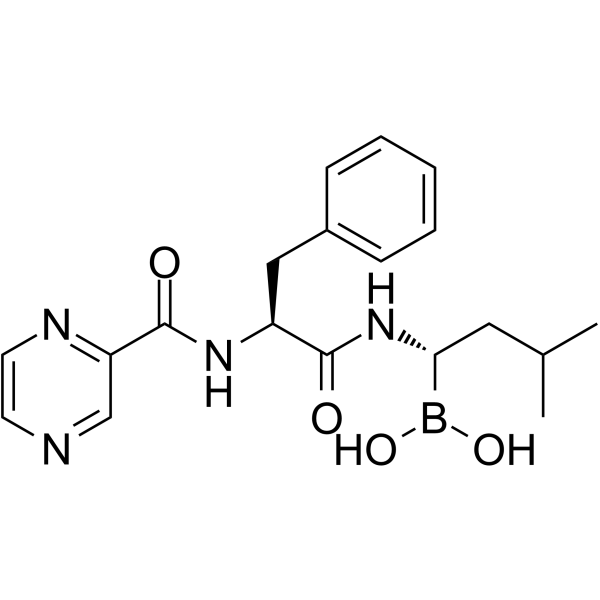
-
GC34965
(20S)-Protopanaxatriol
20(S)-APPT, 20(S)-PPT
활성인삼사이드 대사체
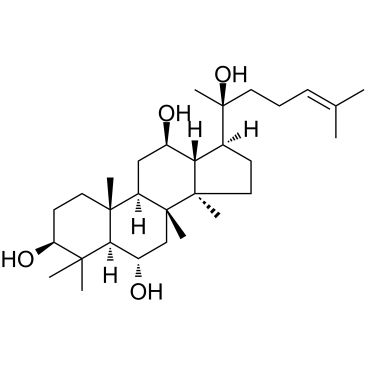
-
GC60397
(5Z,2E)-CU-3
(5Z,2E)-CU-3은 0.6μM의 IC50 값을 갖는 DGK의 α-동종효소에 대한 강력하고 선택적인 억제제이며, 0.48mM의 Km 값으로 ATP에 대한 DGKα의 친화도를 경쟁적으로 억제합니다. (5Z,2E)-CU-3은 촉매 영역을 목표로 하지만 DGKα의 조절 영역은 목표로 하지 않습니다. (5Z,2E)-CU-3은 항종양 및 면역원성 효과가 있으며 암세포의 세포자멸사 및 T 세포의 활성화를 향상시킵니다.
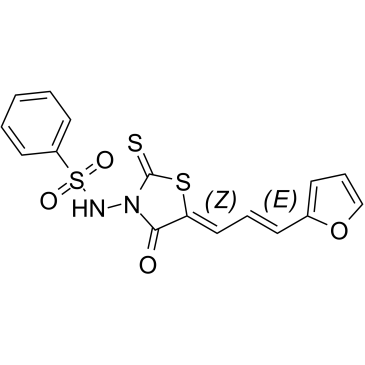
-
GC60398
(6R)-FR054
(6R)-FR054는 FR054의 덜 활성인 이성질체입니다.
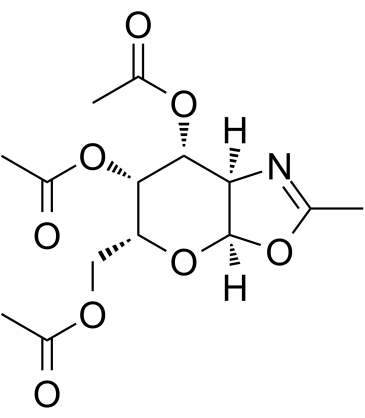
-
GC50482
(D)-PPA 1
PD-1/PD-L1 interaction inhibitor

-
GC69009
(D)-PPA 1 TFA
(D)-PPA 1 TFA는 수해되지 않는 D 펩타이드 억제제입니다. (D)-PPA 1 TFA는 유효한 PD-1/PD-L1 억제제입니다. (D)-PPA 1 TFA의 PD-1 결합 친화력은 0.51 μM이며 체내외에서 모두 효과적입니다.

-
GA20156
(D-Ser(tBu)⁶,Azagly¹⁰)-LHRH (free base)

-
GC41700
(E)-2-(2-Chlorostyryl)-3,5,6-trimethylpyrazine
CSTMP
(E)-2-(2-Chlorostyryl)-3,5,6-trimethylpyrazine (CSTMP) is a stilbene derivative with antioxidant and anticancer activities.
-
GC41268
(E)-2-Hexadecenal
trans-2-Hexadecenal
Sphingosine-1-phosphate (S1P), a bioactive lipid involved in many signaling processes, is irreversibly degraded by the membrane-bound S1P lyase.
-
GC41701
(E)-2-Hexadecenal Alkyne
(E)-2-Hexadecenal alkyne is an alkyne version of the sphingolipid degradation product (E)-2-hexadecenal that can be used as a click chemistry probe.

-
GC34980
(E)-Ferulic acid
(E)-Ferulic acid는 식물 세포벽에 풍부한 방향족 화합물인 Ferrulic acid의 이성질체입니다. (E)-페룰린산은 β-카테닌의 인산화를 일으켜 β-카테닌의 프로테아좀 분해를 유발하고 pro-apoptotic factor Bax의 발현을 증가시키고 pro-survivin 인자 survivin의 발현을 감소시킨다. (E)-페룰산은 활성산소종(ROS)을 제거하고 지질 과산화를 억제하는 강력한 능력을 보여줍니다. (E)-Ferulic acid는 인간 폐암 세포주 H1299에서 항증식 및 항이동 효과를 모두 발휘합니다.
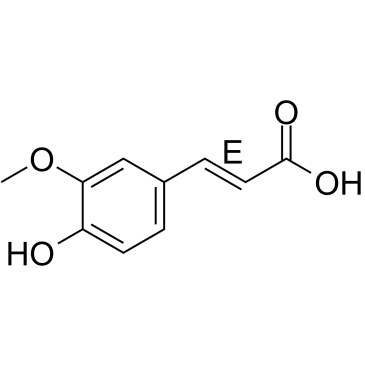
-
GC34981
(E)-Flavokawain A
Flavokavain A, 4-methoxy Flavokawain B
(E)-Flavokawain A, Kava에서 추출한 찰콘은 항암 효과가 있습니다. (E)-플라보카와인 A는 bax 단백질 의존성 및 미토콘드리아 의존성 세포자멸 경로의 관여에 의해 방광암 세포에서 세포자멸사를 유도하고 마우스에서 종양 성장을 억제합니다.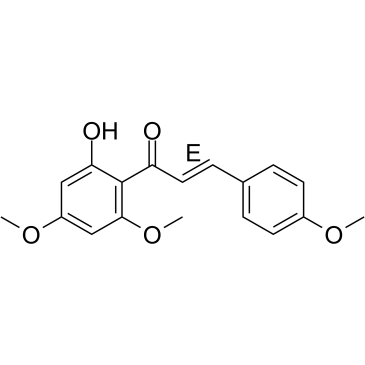
-
GC61437
(E)-Methyl 4-coumarate
trans-4-Coumaric Acid methyl ester, trans-p-Coumaric Acid methyl ester, trans-para-Coumaric Acid methyl ester
(E)-메틸 4-쿠마레이트(메틸 4-하이드록시신나메이트), 파(Allium cepa) 또는 노니(Morinda citrifolia L.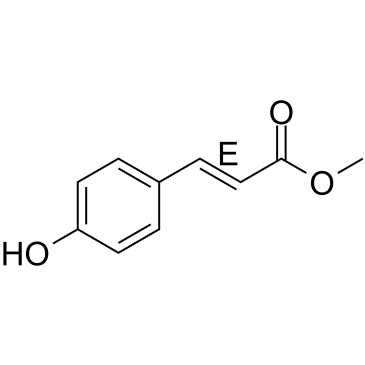
-
GC34125
(E)-[6]-Dehydroparadol
[6]-Shogaol의 산화 대사산물인 (E)-[6]-Dehydroparadol은 강력한 Nrf2 활성화제입니다. (E)-[6]-Dehydroparadol은 인간 암세포의 성장을 억제하고 세포 사멸을 유도할 수 있습니다.
![(E)-[6]-Dehydroparadol Chemical Structure (E)-[6]-Dehydroparadol Chemical Structure](/media/struct/GC3/GC34125.png)
-
GC49189
(E/Z)-4-hydroxy Tamoxifen-d5
Afimoxifene-d5, 4-OHT-d5
An internal standard for the quantification of (E/Z)-4-hydroxy tamoxifen
-
GN10783
(R) Ginsenoside Rh2
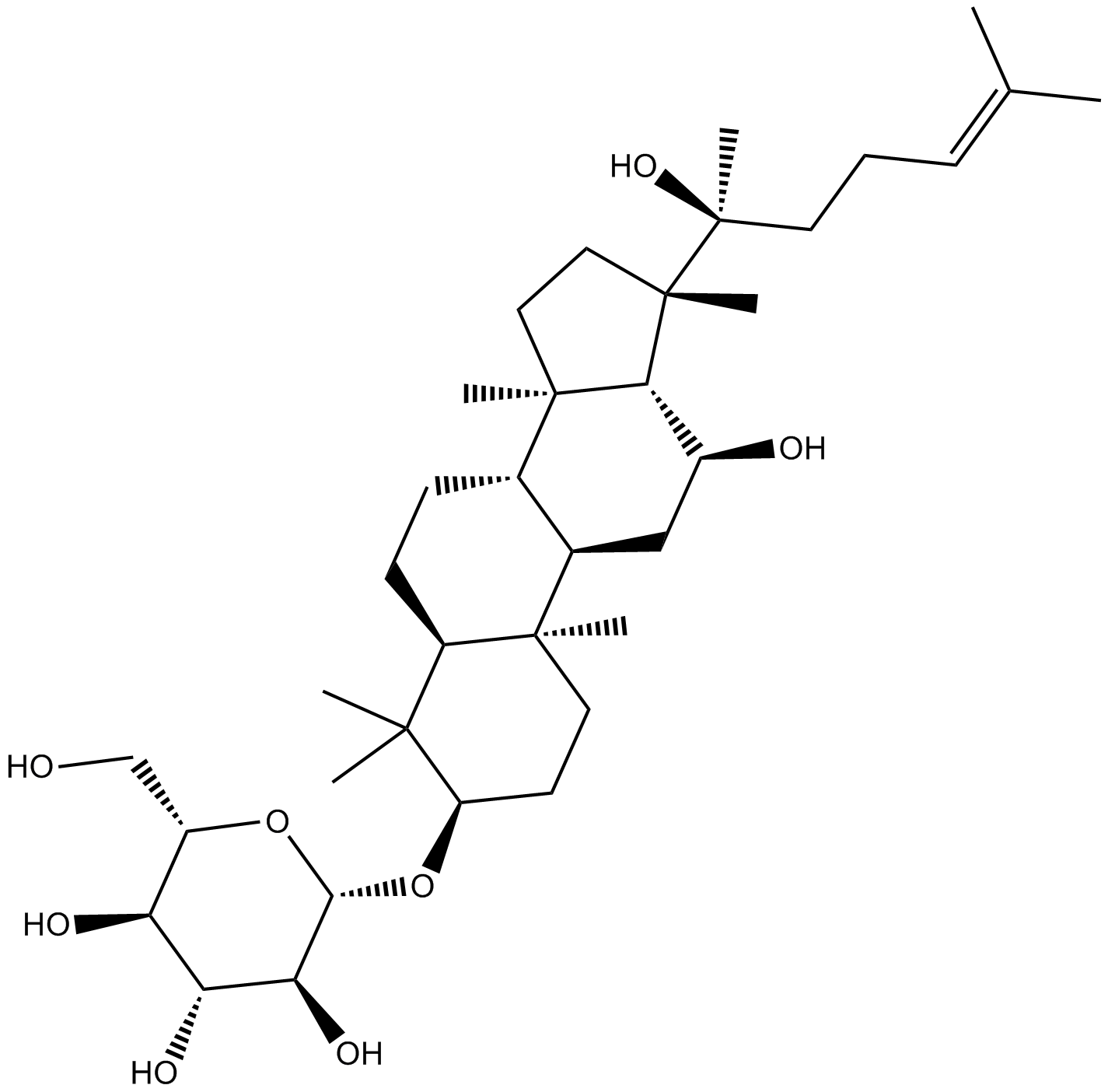
-
GC15104
(R)-(+)-Etomoxir sodium salt
(R)(+)Etomoxir
Etomoxir((R)-(+)-Etomoxir) 나트륨 염은 카르니틴 팔미토일트랜스퍼라제 1a(CPT-1a)의 비가역적 억제제이며 CPT-1a를 통해 지방산 산화(FAO)를 억제하고 팔미테이트 β-인간, 쥐의 산화를 억제합니다. 그리고 기니피그.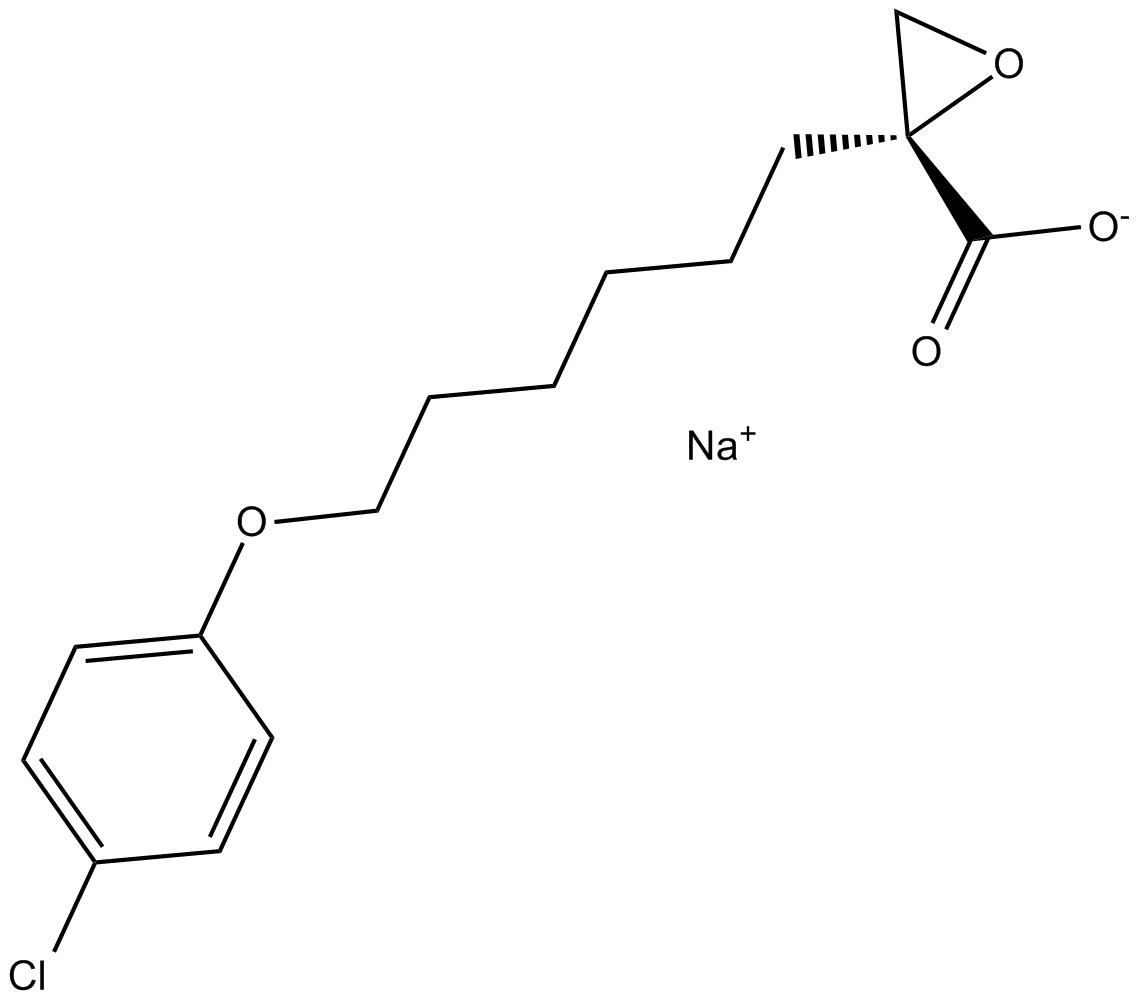
-
GC34096
(R)-(-)-Gossypol acetic acid (AT-101 (acetic acid))
(R)-(-)-Gossypol 아세트산(AT-101(아세트산))(AT-101(아세트산))은 천연물 Gossypol의 좌회전 이성질체이다. AT-101은 각각 260±30nM, 170±10nM 및 4807777877878의 Kis로 Bcl-2, Mcl-1 및 Bcl-xL 단백질에 결합하는 것으로 결정되었습니다.
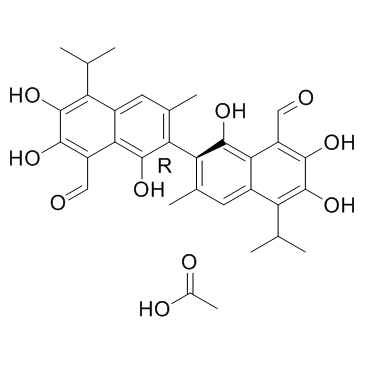
-
GC65610
(R)-5-Hydroxy-1,7-diphenyl-3-heptanone
(R)-5-Hydroxy-1,7-diphenyl-3-heptanone은 Alpinia officinarum에서 찾을 수 있는 diarylheptanoid입니다.

-
GC41716
(R)-CR8
Roscovitine의 2세대 유사체인 (R)-CR8(CR8)은 강력한 CDK1/2/5/7/9 억제제입니다.

-
GC39281
(R)-CR8 trihydrochloride
CR8, (R)-Isomer trihydrochloride
Roscovitine의 2세대 유사체인 (R)-CR8(CR8) trihydrochloride는 강력한 CDK1/2/5/7/9 억제제입니다.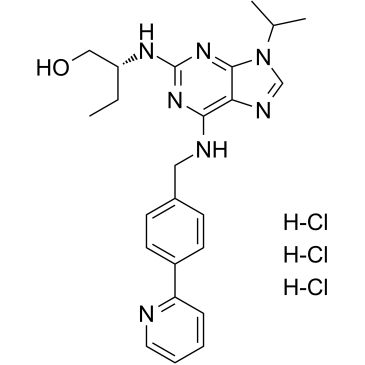
-
GC41719
(R)-nitro-Blebbistatin
R(-)7Desmethyl8nitro Blebbistatin
(R)-nitro-Blebbistatin is a more stable form of (+)-blebbistatin, which is the inactive form of (-)-blebbistatin.
-
GC60407
(R)-Verapamil D7 hydrochloride
(R)-(+)-Verapamil D7 hydrochloride
(R)-Verapamil D7 염산염((R)-(+)-Verapamil D7 염산염)은 (R)-Verapamil 염산염으로 표지된 중수소입니다. (R)-베라파밀 염산염((R)-(+)-베라파밀 염산염)은 P-당단백질 억제제입니다. (R)-Verapamil 염산염은 MRP1 매개 수송을 차단하여 MRP1을 과발현하는 세포가 항암제에 화학 민감화되도록 합니다.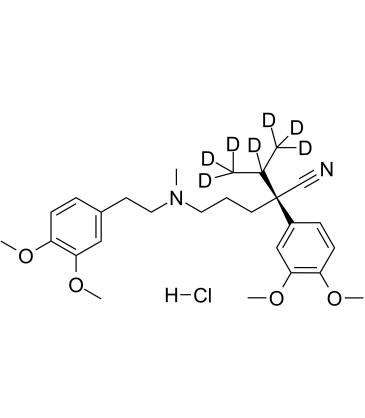
-
GC60408
(R)-Verapamil hydrochloride
(R)-베라파밀 염산염((R)-(+)-베라파밀 염산염)은 P-당단백질 억제제입니다. (R)-Verapamil 염산염은 MRP1 매개 수송을 차단하여 MRP1을 과발현하는 세포가 항암제에 화학 민감화되도록 합니다.
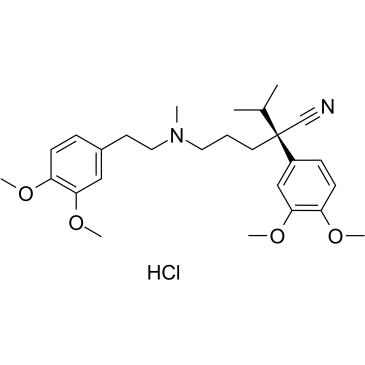
-
GC19541
(rac)-Antineoplaston A10
(rac)-Antineoplaston A10은 Antineoplaston A10의 라세미체입니다. Antineoplaston A10은 신경교종, 림프종, 성상세포종 및 유방암 치료에 잠재적으로 사용되는 Ras 억제제입니다.

-
GC69795
(Rac)-BIO8898
(Rac)-BIO8898는 CD40-CD154 공자극 상호작용 억제제입니다. (Rac)-BIO8898은 CD154과 CD40-Ig 결합을 억제하며, IC50 값은 25 μM입니다.
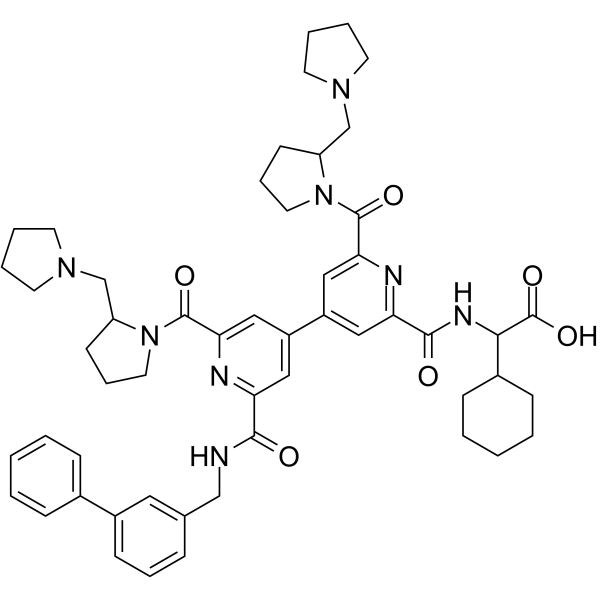
-
GC62528
(Rac)-Hesperetin
(Rac)-Hesperetin은 Hesperetin의 라세미체입니다.
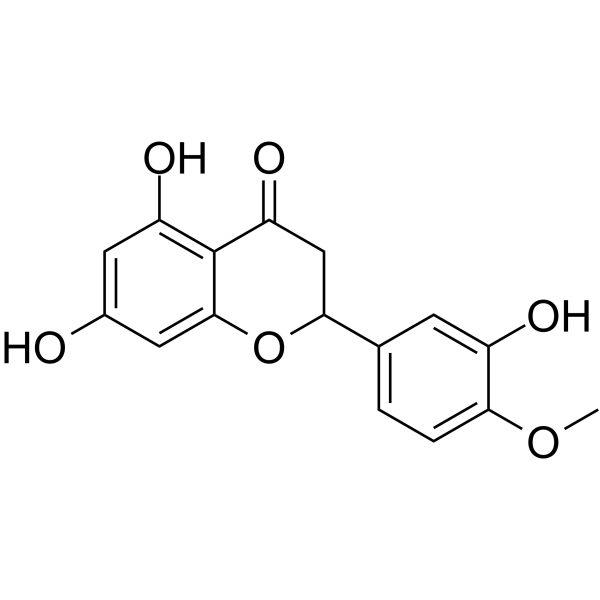
-
GC61750
(Rac)-Indoximod
(Rac)-인독시모드(1-메틸-DL-트립토판)는 인돌아민 2,3-디옥시게나제(IDO) 억제제입니다.
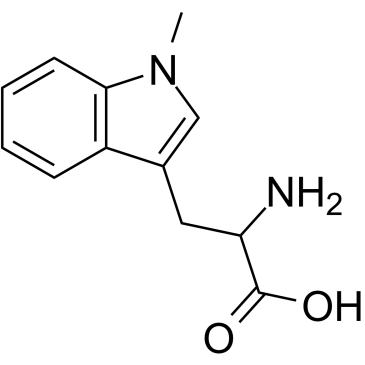
-
GC10098
(S)-10-Hydroxycamptothecin
ChEMBL 273862, NSC 107124
(S)-10-Hydroxycamptothecin(10-HCPT;10-Hydroxycamptothecin)은 중국 식물 Camptotheca accuminata에서 분리된 DNA 토포이소머라제 I 억제제입니다. (S)-10-히드록시캄프토테신은 현저한 세포자멸사 유도 효과를 나타낸다. (S)-10-하이드록시캄프토테신은 간암, 위암, 결장암 및 백혈병 치료에 대한 가능성이 있습니다.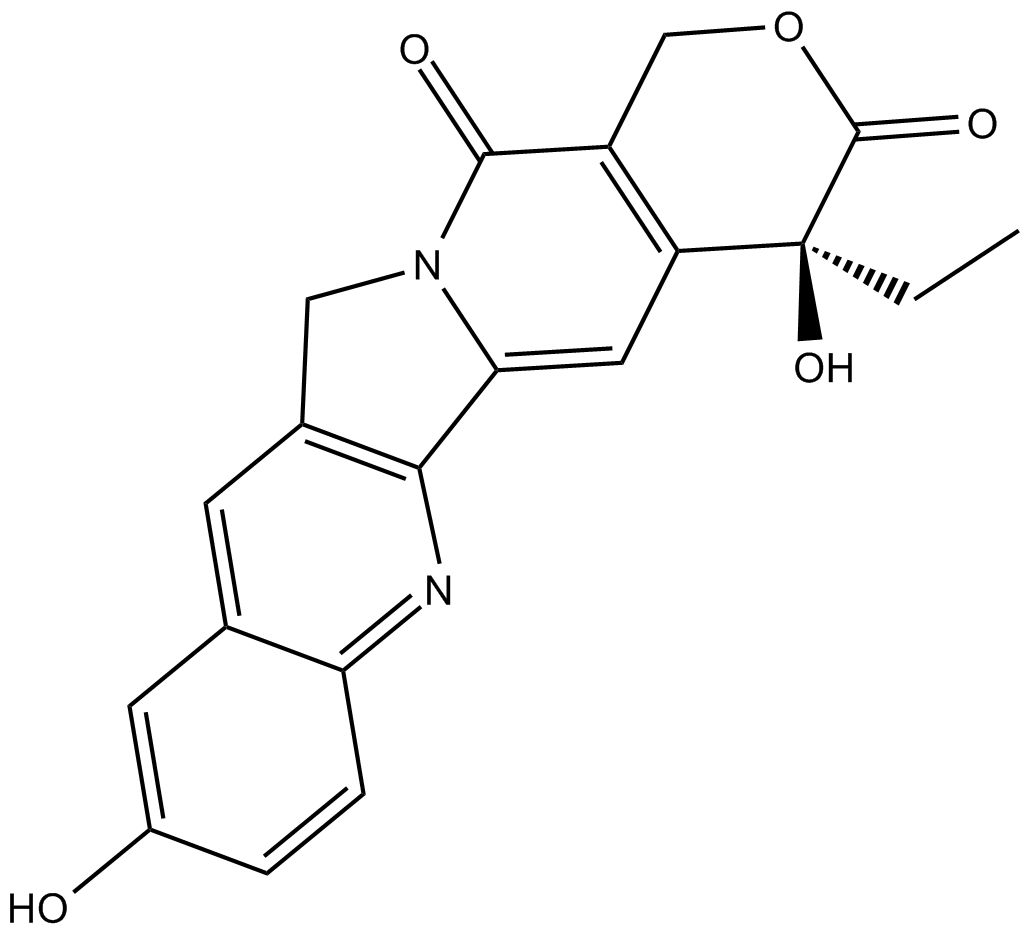
-
GC41557
(S)-3'-amino Blebbistatin
(-)-3'-amino Blebbistatin, m-amino Blebbistatin, meta-amino Blebbistatin
(S)-3'-amino Blebbistatin is a more stable and less phototoxic form of (-)-blebbistatin, which is a selective cell-permeable inhibitor of non-muscle myosin II ATPases.
-
GC41484
(S)-3'-hydroxy Blebbistatin
(-)-3'-hydroxy Blebbistatin, meta-hydroxy-Blebbistatin, m-hydroxy-Blebbistatin
(S)-3'-hydroxy Blebbistatin is a more stable and less phototoxic form of (-)-blebbistatin, which is a selective cell-permeable inhibitor of non-muscle myosin II ATPases.
-
GC52192
(S)-4'-nitro-Blebbistatin
(-)-4'-nitro-Blebbistatin, p-nitro-Blebbistatin, para-nitro-Blebbistatin
(S)-4'-nitro-Blebbistatin은 생리학적, 발달 및 세포 생물학 연구에서 미오신 II의 특정 역할에 대한 연구에 사용되는 비세포독성, 광안정성, 형광성 및 특정 미오신 II 억제제입니다.
-
GC35001
(S)-Gossypol acetic acid
(S)-(+)-Gossypol acetic acid
(S)-Gossypol은 천연 제품 Gossypol의 이성질체입니다. (S)-Gossypol은 Bcl-xL 및 Bcl-2 단백질의 BH3 결합 홈에 높은 친화도로 결합합니다.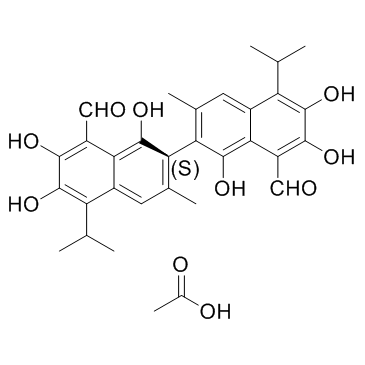
-
GC41739
(S)-nitro-Blebbistatin
S(-)7Desmethyl8nitro Blebbistatin
(S)-nitro-Blebbistatin is a more stable form of (-)-blebbistatin, which is a selective cell-permeable inhibitor of non-muscle myosin II ATPases.
-
GC60425
(S)-Verapamil D7 hydrochloride
(S)-(-)-Verapamil D7 hydrochloride
(S)-Verapamil D7 염산염((S)-(-)-Verapamil D7 염산염)은 (S)-Verapamil 염산염으로 표지된 중수소입니다. (S)-Verapamil 염산염(S(-)-Verapamil 염산염)은 MRP1에 의한 류코트리엔 C4(LTC4)와 칼세인 수송을 억제합니다. (S)-Verapamil 염산염은 잠재적으로 내성이 있는 종양 세포를 죽입니다.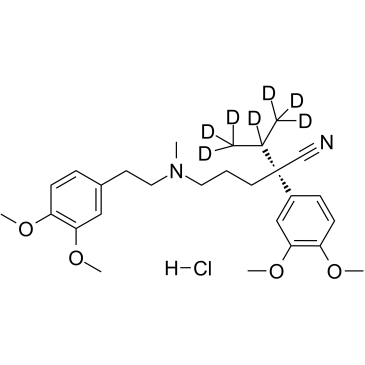
-
GC60008
(S)-Verapamil hydrochloride
(S)-Verapamil 염산염(S(-)-Verapamil 염산염)은 MRP1에 의한 류코트리엔 C4(LTC4)와 칼세인 수송을 억제합니다. (S)-Verapamil 염산염은 잠재적으로 내성이 있는 종양 세포를 죽입니다.
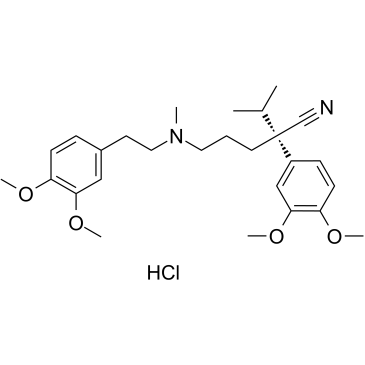
-
GC18787
(±)-Dunnione
NSC 95403
(±)-Dunnione is a naturally occurring naphthoquinone with diverse biological activities.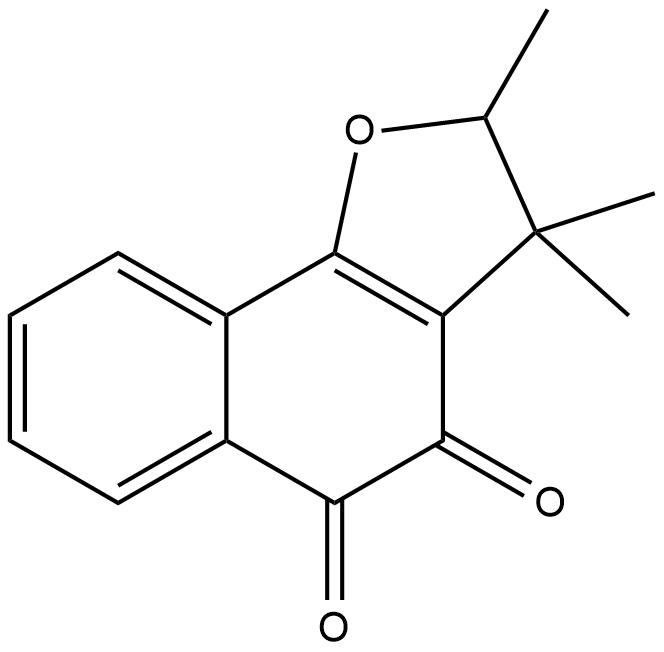
-
GC11965
(±)-Huperzine A
Hup A, (-)-Selagine
A neuroprotective AChE inhibitor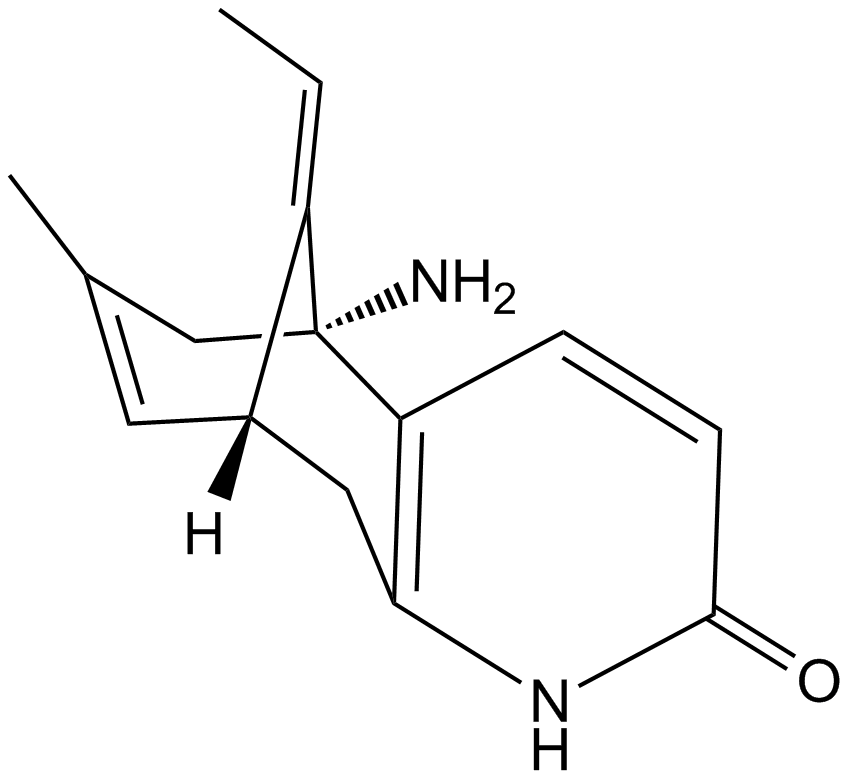
-
GC16375
(±)-Jasmonic Acid methyl ester
(±)-Methyl Jasmonate
(±)-자스몬산 메틸 에스테르는 내인성 대사 산물입니다.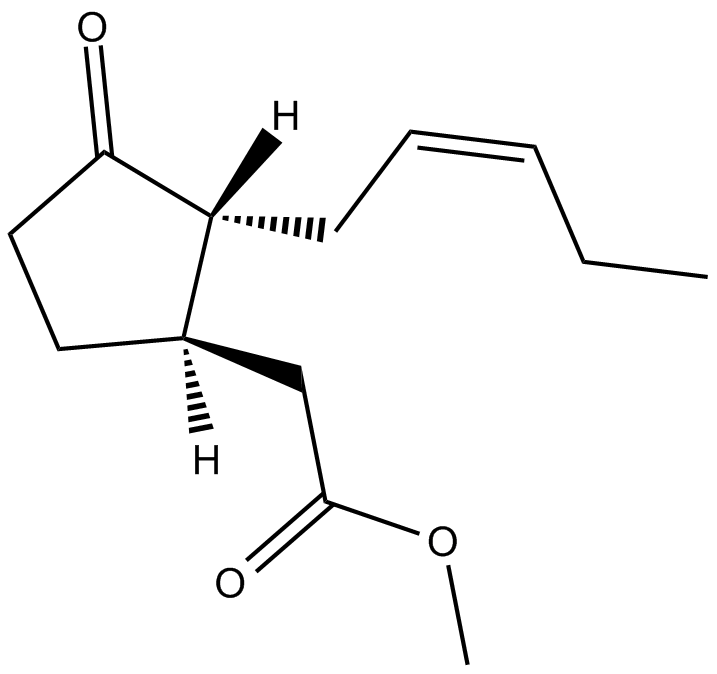
-
GC14154
(±)-Nutlin-3
Nutlin 3b
MDM2 antagonist, potent and selective
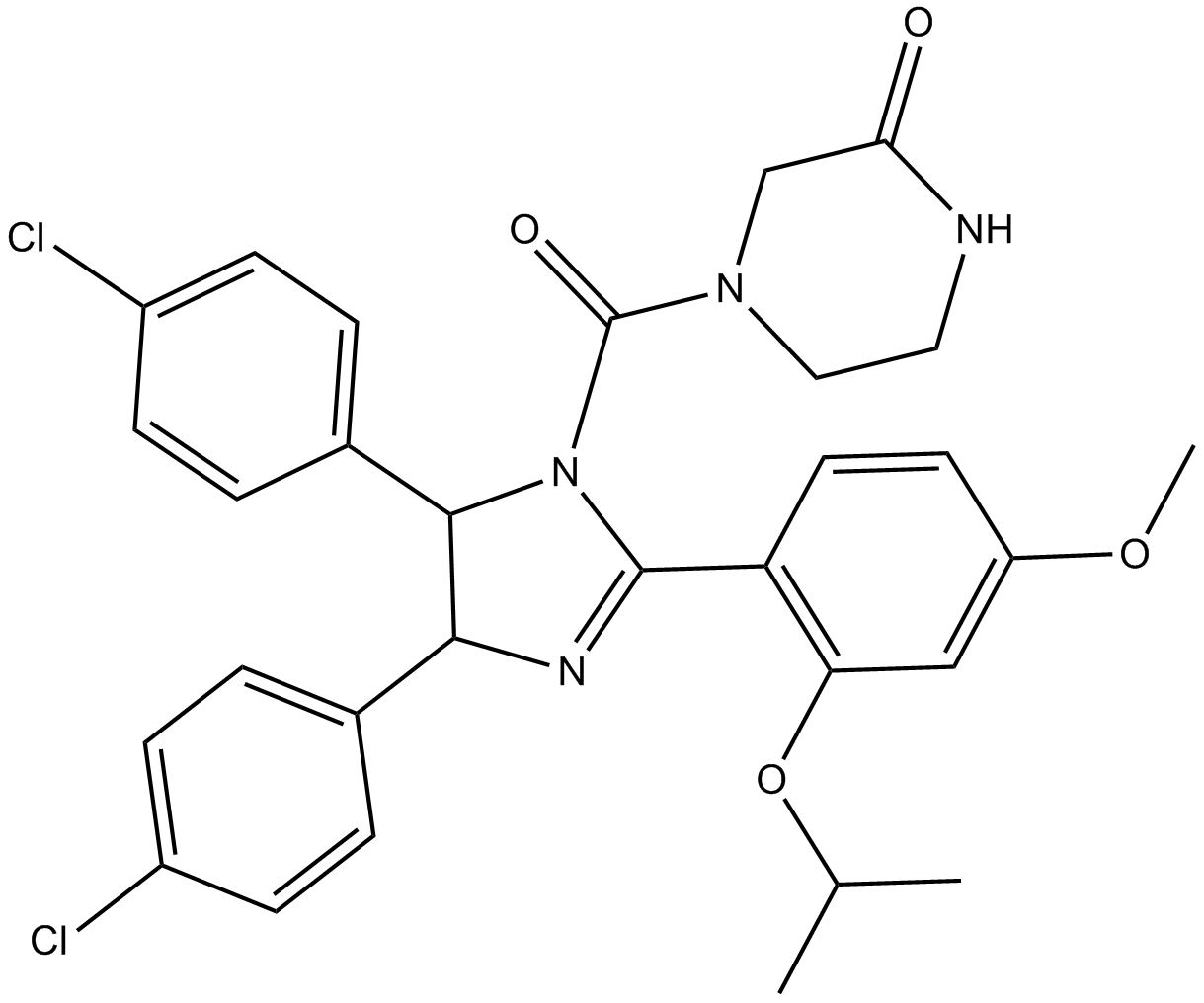
-
GC46379
1,2-Dioleoyl-sn-glycero-3-PS (sodium salt)
1,2-DOPS, 18:1/18:1-PS; PS(18:1/18:1), 1,2-Dioctadecenoyl-sn-glycero-3-Phosphoserine, 1,2-Dioctadecenoyl-sn-glycero-3-Phosphatidylserine
1,2-Dioleoyl-sn-glycero-3-PS(나트륨염)는 포스포세린/포스파티딜세린을 대체합니다.
-
GC19528
1,4-Benzoquinone
p-Benzoquinone, NSC 36324, p-Quinone
A toxic metabolite of benzene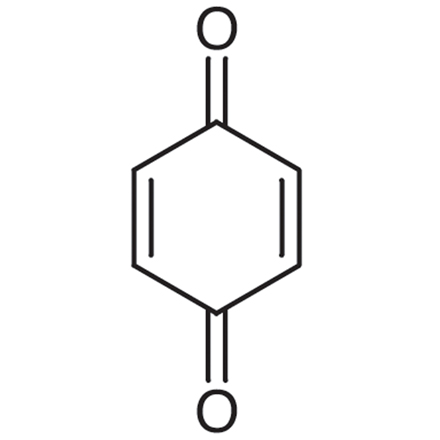
-
GC42018
1-O-Octadecyl-2-O-methyl-sn-glycerol
2Methyl1octadecylsnglycerol, PIA 7
1-O-Octadecyl-2-O-methyl-sn-glycerol is a metabolite of a phosphotidylinositol ether lipid analog (PIA).
-
GC41865
10'-Desmethoxystreptonigrin
10'-Desmethoxystreptonigrin is an antibiotic originally isolated from Streptomyces and a derivative of the antibiotic streptonigrin.

-
GC49736
10-acetyl Docetaxel
PNU 101383, 10-acetyl Taxotere
10-아세틸 도세탁셀(10-Acetyl docetaxel)은 항암 활성이 있는 도세탁셀의 유사체입니다. 도세탁셀은 유사분열 억제 활성이 있는 미세소관 분해 억제제입니다.
-
GC64726
10-Formyl-5,8-dideazafolic acid
10-Formyl-5,8-dideazafolic acid는 thymidylate synthase 억제제입니다.

-
GC49872
10-Formyltetrahydrofolate (sodium salt) (technical grade)
10-CHO-FH4, 10-CHO-THF, N10-Formyltetrahydrofolate, 10-formyl H4PteGlu, 10-fTHF
10-Formyltetrahydrofolate (나트륨 염) (기술 등급)은 동화 작용에서 포르밀 그룹의 공여체로 작용하는 tetrahydrofolic acid의 한 형태입니다.
-
GC70375
12-HETE-d8
12-HETE-d8 is the deuterium labeled 12-HETE.

-
GC35057
14-Deoxyandrographolide
14-DAG
14-Deoxyandrographolide는 칼슘 채널 차단 활성이 있는 labdane diterpene입니다.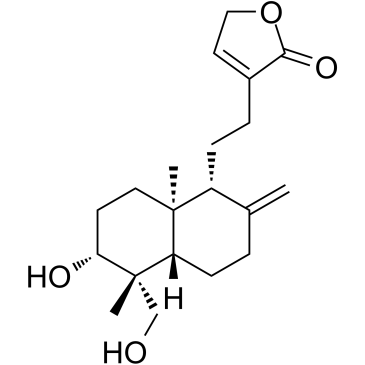
-
GC11988
15-acetoxy Scirpenol
4-Deacetylanguidin,NSC 267030
ASM(acetoxyscirpenol moiety mycotoxins) 중 하나인 15-acetoxyscirpenol은 caspase-3와 무관한 다른 caspase를 활성화하여 용량 의존적으로 Jurkat T 세포 성장을 억제하고 세포 사멸을 강력하게 유도합니다.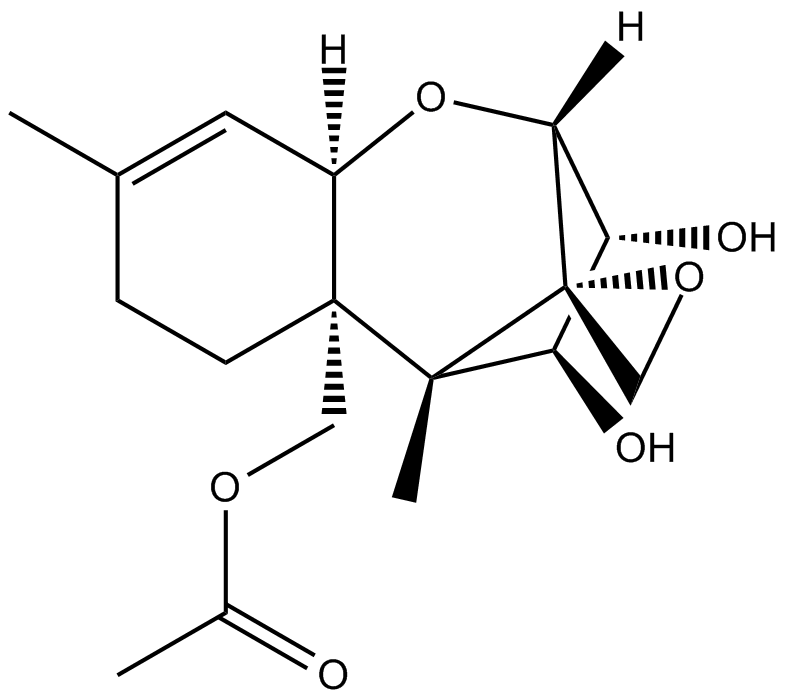
-
GC41938
15-Lipoxygenase Inhibitor 1
15LO Inhibitor 1
15-리폭시게나제 억제제 1은 IC50이 18 μ인 15-리폭시게나제의 선택적 억제제입니다. 15-리폭시게나제 억제제 1은 IC50이 각각 19.5 μM 및 19.1 μM입니다. 대두 15-리폭시게나제(SLO) 및 인간 15-리폭시게나제-1(15)-LOX-1(15)- 15-Lipoxygenase Inhibitor 1은 전립선암 연구에 잠재력이 있습니다.
-
GC46451
16F16
A PDI inhibitor

-
GC11720
17-AAG (KOS953)
BMS 722782, CP 127374, KOS 953, NSC 330507, Tanespimycin
17-AAG (KOS953)은 자연 발생하는 벤조퀴논 안샘시스 항생제로 Hsp90의 첫 번째 확립된 억제제이다.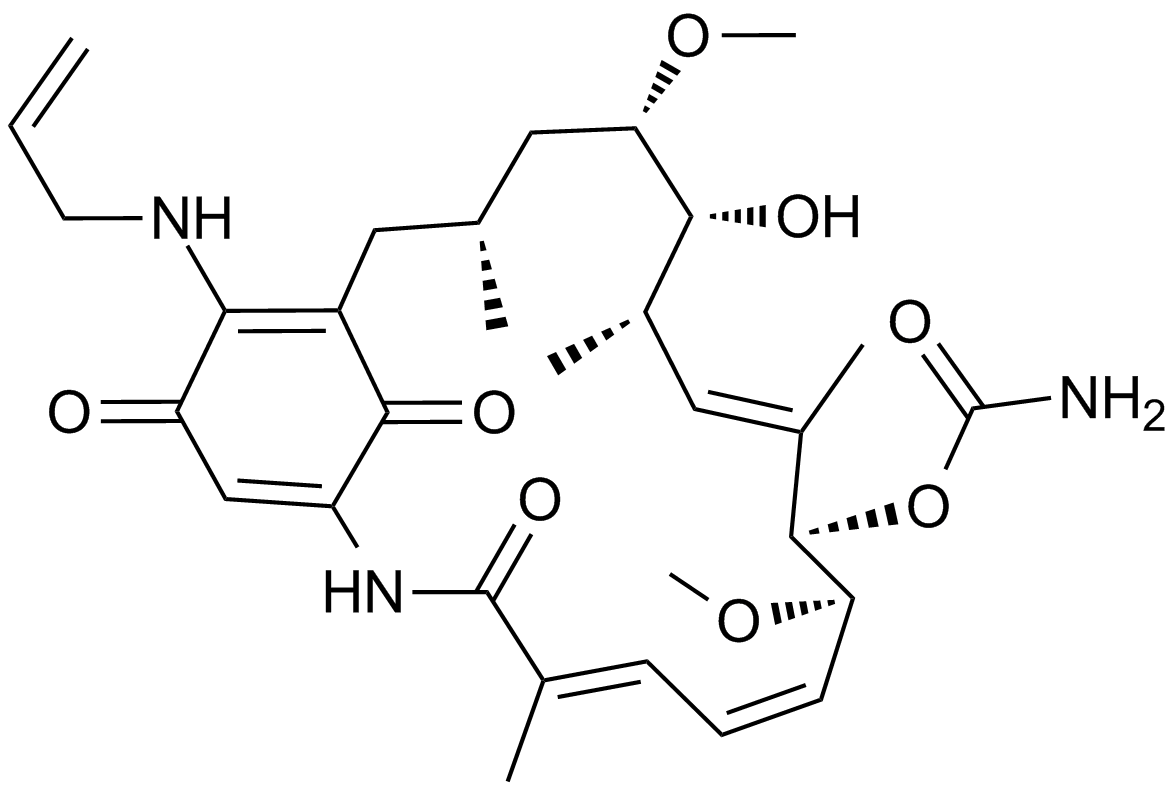
-
GC13044
17-DMAG (Alvespimycin) HCl
17-DMAG(알베스피마이신) HCl(17-DMAG 염산염; KOS-1022; BMS 826476)은 62&7#177;29nM의 EC50으로 Hsp90에 결합하는 Hsp90의 강력한 억제제입니다.

-
GC41983
19,20-Epoxycytochalasin D
사이토칼라신인 19,20-에폭시사이토칼라신 D는 Nemania sp.

-
GC48423
19-O-Acetylchaetoglobosin A
Chaetoglobosin A Acetate
19-O-Acetylchaetoglobosin A는 cytochalasan alkaloid로 C. globosum에서 원래 분리된 곰팡이 대사산물로 액틴 중합 억제 및 세포 독성 활성을 가지고 있습니다. 19-O-아세틸키토글로보신 A는 HeLa 자궁경부암 세포에 세포독성을 나타냅니다.
-
GC39296
1G244
1G244는 IC50이 각각 12nM 및 84nM인 강력한 DPP8/9 억제제입니다. 1G244는 DPPIV 및 DPPII를 억제하지 않습니다. 1G244는 다발성 골수종 세포에서 세포 사멸을 유도하고 항골수종 효과가 있습니다.
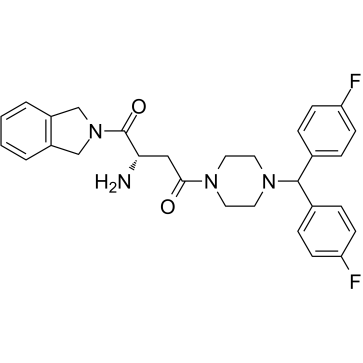
-
GC46508
2',2'-Difluoro-2'-deoxyuridine
dFdU
An active metabolite of gemcitabine
-
GC41612
2'-O-Methylguanosine
2'-O-메틸구아노신은 tRNA 구아노신-2'-O-메틸트랜스퍼라제의 작용에 의해 tRNA에서 생성되는 변형된 뉴클레오시드입니다.

-
GC12258
2,3-DCPE hydrochloride
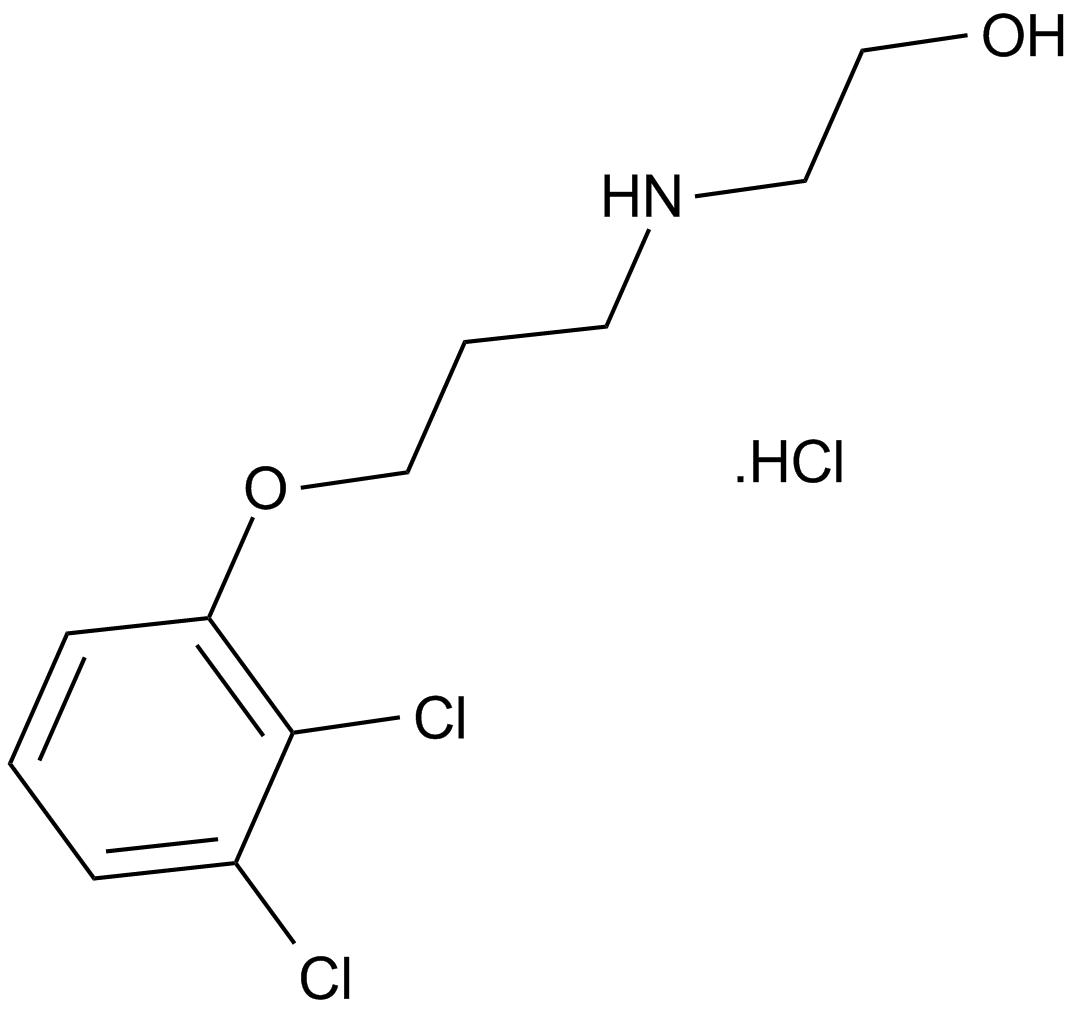
-
GC40947
2,3-Dimethoxy-5-methyl-p-benzoquinone
Coenzyme Q0, CoQ0
2,3-Dimethoxy-5-methyl-p-benzoquinone(CoQO)은 강력한 경구 활성 유비퀴논 화합물로 Antrodia cinnamomea에서 추출할 수 있습니다.
-
GC68452
2,4,6-Triiodophenol

-
GC46057
2,5-Dihydroxycinnamic Acid phenethyl ester
An inhibitor of 5-LO

-
GC45324
2,5-dimethyl Celecoxib
DMC

-
GN10065
2-Atractylenolide
2-Atractylenolide
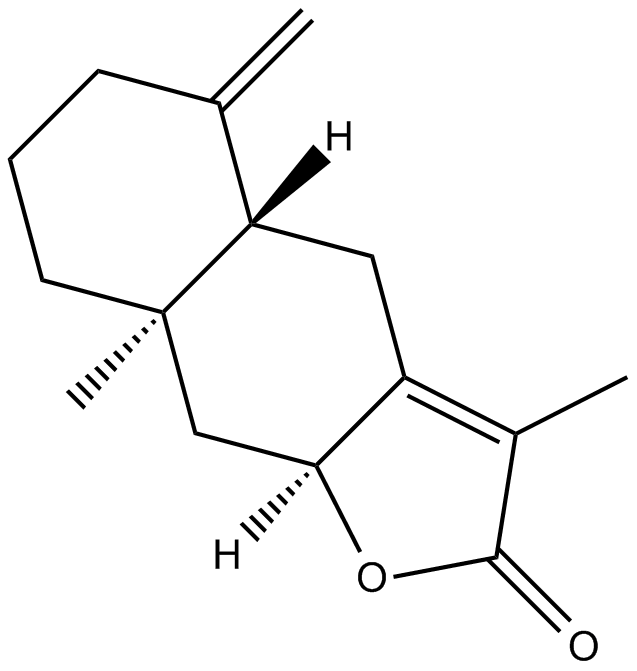
-
GC40675
2-deoxy-Artemisinin
2-deoxy-Artemisinin is an inactive metabolite of the antimalarial agent artemisinin.

-
GC17430
2-Deoxy-D-glucose
2-DG
2-Deoxy-D-glucose (2DG)는 포도당 유사 물질로 경쟁적 당질 억제제로 작용한다.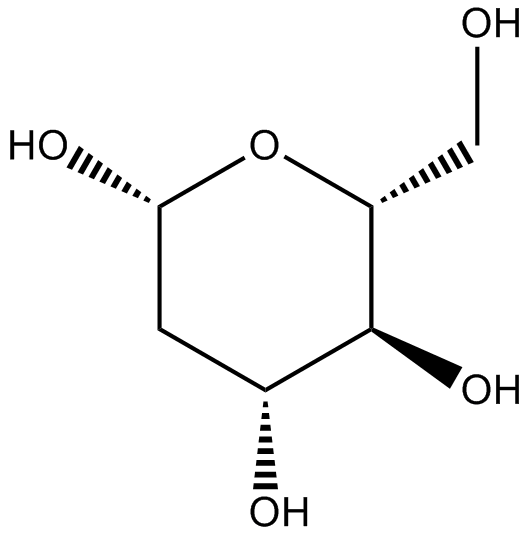
-
GC49223
2-deoxy-D-Glucose-13C6
2-DG-13C6
An internal standard for the quantification of 2-deoxy-D-glucose
-
GC46545
2-Fluoroadenine
F-Ade, NSC 27364
2-플루오로데닌은 독성 퓨린 염기입니다. 2-플루오로데닌은 비증식성 및 증식성 종양 세포에 독성이 있습니다. 2-플루오로데닌은 항암 연구에 사용될 수 있습니다.
-
GC12545
2-HBA
Bis(2-hydroxybenzylidene)acetone
2-HBA는 NAD(P)H:quinone acceptor oxidoreductase 1(NQO1)의 강력한 유도제로 카스파제-3 및 카스파제-10도 활성화할 수 있습니다.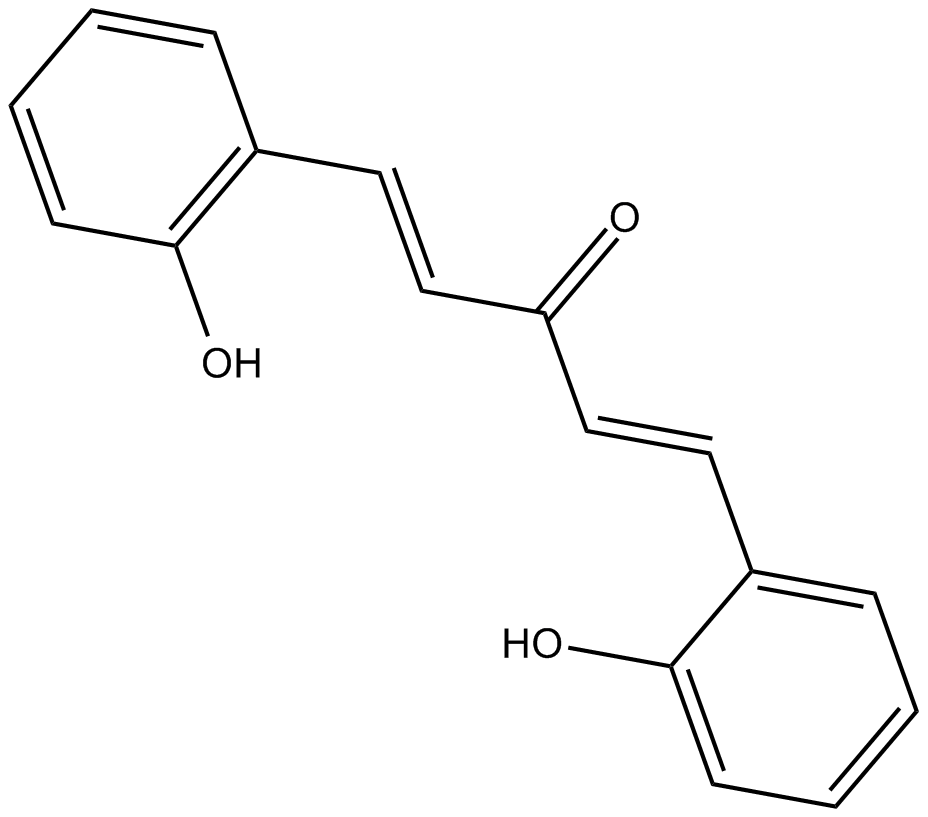
-
GC38318
2-Methoxycinnamaldehyde
2-Methoxycinnamaldehyde(o-Methoxycinnamaldehyde)는 Cinnamomum cassia의 천연 화합물로 항종양 활성이 있습니다. 2-메톡시신남알데하이드는 미토콘드리아 막 전위(δψm) 손실, 카스파제-3 및 카스파제-9 모두의 활성화에 의해 증식을 억제하고 세포자멸사를 유도합니다. 2-Methoxycinnamaldehyde는 PDGF(혈소판 유래 성장 인자)로 인한 HASMC 이동을 효과적으로 억제합니다.
